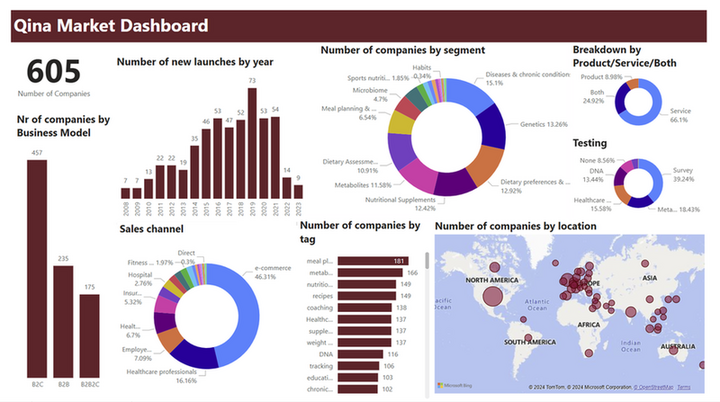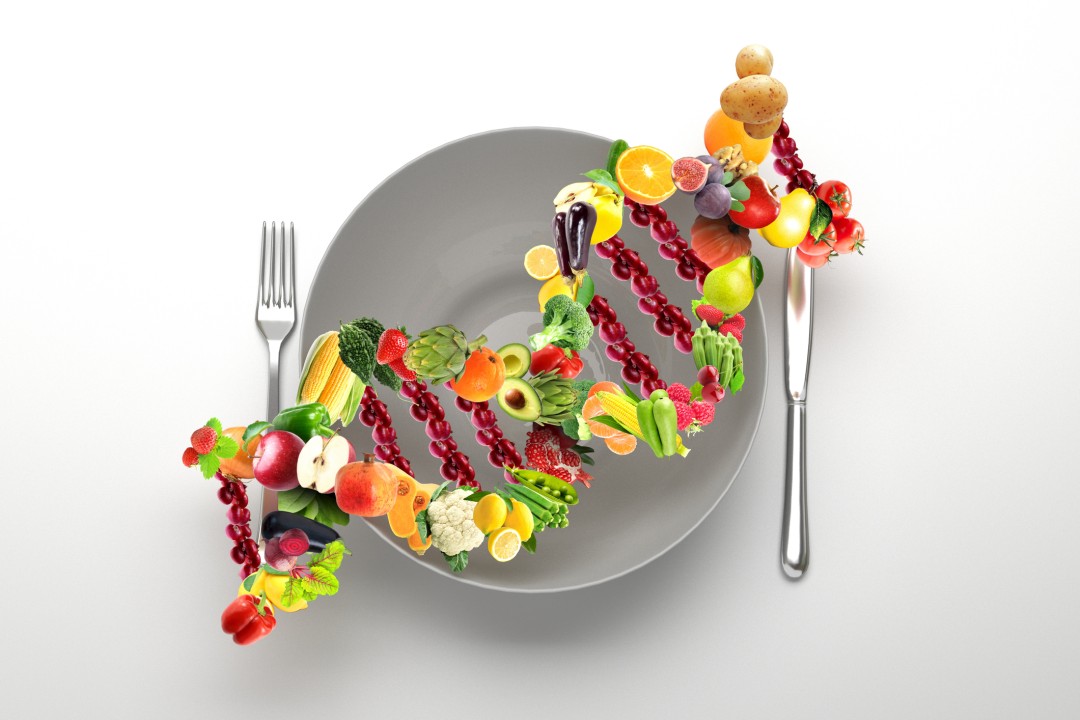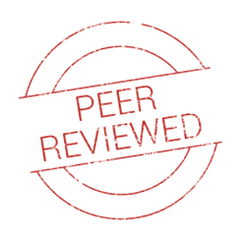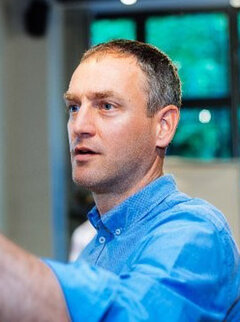Personalized nutrition
Personalised nutrition:
breakthrough or eternal promise?
Nard Clabbers1 , Marjolijn C.E. Bragt2
1. Director of Strategic Development for Brightlands Venlo and Founder at NCNC Nutrition Consultancy, The Netherlands
2. Programme Manager Nutrition for Optimal Health, Wageningen Food and Biobased Research, Wageningen, The Netherlands



KEYWORDS
Personalised nutrition
Precision nutrition
Health
Innovation
Trends
Abstract
Personalized nutrition (PN) represents a growing field aimed at tailoring dietary recommendations to individuals based on their unique biological, psychological, and lifestyle factors. While the potential of PN to enhance health outcomes and address non-communicable diseases is promising, the path to scalable and effective solutions remains complex. This article explores the evolution of PN, from early genetic-based approaches to more holistic models incorporating behaviour change and microbiome insights. We examine the scientific opportunities, challenges in market adoption, and the role of advanced data analytics in shaping the future of PN. The question remains: can PN fulfil its promise, or will it remain an elusive goal for both industry and consumers?
What is personalised nutrition, where do we stand and how did it evolve?
Any article, presentation or even conversation on the concept of personalized nutrition is best started with a short introduction of the concept. In our experience over the years, many different ideas exist around personalised nutrition and it’s best to clear up the definition issues right from the start because you never know what the term ‘Personalised Nutrition’ (PN) means to your conversation partner.
In 2021, Foodvalley NL, a Dutch innovation organization, initiated the writing of a widely supported (by both industry and academia) position paper on PN and we will use the definition that was coined therein (1), which states:
‘Personalised nutrition could be a service or a product. It uses individual-specific information, is founded in evidence-based science and has the goal to give consumers control and promote a positive, sustainable dietary behavioural change. This may then result in measurable benefits for personal goals like health improvement and maintenance, or disease specific benefits’.
What is relevant here is that PN is not necessarily the high-tech, DNA and blood-analysis world where hyper-efficient people are the CEO's of their own health which is often shown in advertisements and communication. It could just as well be about online shoppers that have indicated they are looking for ways to lose weight, have high blood pressure and that are presented with low-salt recipes that are limited in calories and higher in fibre (to give an example). No blood involved, nothing too fancy but potentially highly effective and valuable for these individuals. This individual value could be extended to a societal value if applied at scale. As we will see, this scaling is one of the challenges of PN.
The fact that PN in this definition is as much about behaviour change as it is about biological factors is noteworthy. To be effective, personalisation should be extended to learning about people's goals and how to influence each individual in a bespoke manner to motivate them to change their behaviour. Without that happening, there is little value to any PN product.
So how did we get to this point in PN, to this quite holistic view on personalisation, incorporating not only biological markers of health, performance and disease but also looking at an individual’s needs, wants and psychological profile?
It could be argued that personalised nutrition as an industry started around 2006 with the launch of UK based direct-to consumer nutrigenetic company Sciona. The industry continued to grow and more genetic and blood marker testing companies entered the space. By 2015, the industry had mushroomed into several segments that included smart eating as well as using devices, trackers, DNA and blood biomarker tests. Companies supplied both personalised nutrition supplements and meals. Following the publication of several landmark papers like Zeevi et al. 2015 (2) and public interest, the microbiome segment also grew to become an exceedingly popular segment. By 2018, the industry expanded to include 200 companies providing a mixture of products and services. In 2024, the industry is poised for growth and currently comprises more than 600 companies offering a range of different solutions (3), which is depicted in figure 1. More and more PN companies are using behaviour change techniques to enhance their offer. This is certainly helped by the popularization of AI technologies like Large Language Models (ChatGPT) that enable easier interaction with the user.

Figure 1. QINA PN Intelligence Platform - Personalized Nutrition market overview September 2024 (3).
So, should PN always and only be about individuals? No. 'Personalisation’ might hold an even greater promise for targeting sub-groups in the population. These sub-groups can be defined based on consumer needs, identification with a certain goal, biological health profiles or a health condition. This is often being referred to as ‘targeted nutrition’ and holds great promise as a path in its own right or a step towards a full blown PN service.
Towards the future, using data to find better solutions for individuals or (smaller and smaller) sub-groups will grow and grow. Instead of only requesting consumers to submit their data to receive one personalised advice, modern PN approaches will require constant interaction and reciprocity between parties. The continuous consumer feedback will be an integral part of the data stream needed to improve the underlying algorithms to be able to provide tailormade advice. Finally, we believe that companies should be looking at combining their strengths to lower the threshold for consumers to buy into the benefits of PN.

Why is it the global market of Personalised Nutrition commercially speaking a complex space to operate in?
For a recent report, we looked at all the (commercially) available reports on the size and the growth of the PN market. Every report showed sizeable markets and healthy growth percentages. However, these reports are hindered by the definition of the market. When do we call something a PN company? Current size could be around 10-20 billion USD, growing steadily to about twice the size by 2030.
However, the market for PN has shown to be quite harsh, with well-funded companies like Habit and Arivale not making it and many startups that have not reached the mass market or vanished altogether. NX-Food published a position paper on the market potential of PN in 2021 and many of what was said there is still relevant (4). ‘Ultimately, personalized experiences add value for consumers, and they’re often willing to pay more for higher levels of personalisation.’ But the question remains:’ If all of these health and wellness trends point to a potential demand for more PN, why hasn’t the industry exploded as quickly as other data-driven health sectors?’
Most of this has to do with the inflated expectations of the consumers that expect too much of the concept compared to the ‘cost’. The cost is not only the monetary value that needs to be paid but also (and especially) the burden of dealing with the non-integrated world that is PN now.
Several promising areas for PN are mentioned in this 2021 report, like personalized e-grocery, gastronomy, a personalized nutrition platform or subscription-based personalized meal services. There are certainly successful examples in every of these categories but to date, most PN companies rely on the basics; selling advice (meal plans, tips, and tricks) and/or personalized supplements.
Scientific opportunities and challenges in the personalized nutrition & health field
The importance of preventive health strategies
The global rise of obesity and noncommunicable diseases and associated rise in health care costs highlights the importance of preventive health strategies leading to health-promoting changes in lifestyle. Evidence-based dietary guidelines are valuable for the general population to maintain health, but at the same time it becomes increasingly evident that there is no “one size fits all”. Not only genetics, but also gender, age, microbiome, lifestyle, epigenetics, dietary intake, medicine use, and environmental factors can influence responses to a food product or diet. This is where PN strategies may provide an opportunity to increase the effectiveness of disease prevention. In this promising field, the main scientific challenge is to better understand all factors that underpin and predict health responses to personalized dietary interventions to select the right intervention.
Gut microbiome, adding a new dimension in personalized nutrition and health
The gut microbiome is increasingly being recognized to impact human health, as it plays a key role in the digestion and absorption of nutrients, the modulation of the immune response and the gut-brain axis. The health impact of food and diet is influenced by the composition of the gut microbial community (‘who they are’), but even more by the metabolic capacity of the gut microbiome (‘what they do’) (5). The latter refers to studying the metabolites produced by the gut bacteria, which is less variable and may be more predictive than just looking at species. Unravelling the interactions between diet, gut health, and microbiome using a combination of in silico, in vitro, ex vivo and in vivo approaches, holds great promise for bringing future PN solutions to a next level in terms accuracy of advice and impact.
Data, algorithms and AI: beyond the black box
Enormous amounts of data are collected in the field of PN, but major limitations are faced in the processing and analysis of ‘big data’ to provide a correct interpretation and translation of all data interrelations between person-specific host physiology, diet and microbiome. The process from data collection to consumer advice is often a black box, and knowledge-based translation from nutrition and health data to a personalized advice is warranted. Algorithms are needed to enable the prediction of the type of diet a person requires based on (changes in) physiological biomarkers, lifestyle factors, gut microbiome, and environmental factors. To design predictive algorithms, the quality of the starting dataset is of great importance (‘garbage in, garbage out’ principle). The accuracy of dietary intake and biological measurements, utilization and standardization of analytical methods and data systems deserve more attention in this respect. Lastly, it is important to mention that while the rise of conversational AI, like ChatGPT, is making user interaction easier, future research is warranted for guidelines on how this can be applied in a science-based manner and to understand where things can go wrong.
Consumer adherence: nutrition and health apps
PN and health apps are considered promising tools to support consumers in their journey towards a healthier diet. There is evidence that mobile health apps are effective to stimulate healthier behaviours, such as increasing physical activity, improving dietary habits and weight loss (6). Web-based dietary interventions showed the potential to be successful at inducing short-term changes (7), but consumers encounter several difficulties in using nutrition apps for a longer period. In designing mobile health app interventions, a study by Ter Haar et al. indicates that a participatory approach is key. This ensures that the intervention truly addresses the target user’s needs and that the applied technology is fit to be successfully implemented in real life (6). More research efforts are needed to better understand the trade-offs between different app functionalities and to investigate the influence of user characteristics and characteristics of the eating context on consumers’ intentions to use nutrition apps.
Measuring success of personalized nutrition solutions
There is growing proof of the added benefit of PN approaches compared to a general dietary and lifestyle advice, but it is not nearly enough. The essential step is to prove that individualization works on a larger scale and to better understand which level of individualization is needed. This is a challenging task at hand, which may require non-conventional approaches. Robust and conventional randomized controlled trials are needed to prove that the proposed personalized treatment will improve individual’s health, but the role of the study participant in this type of study is passive. A promising way of research is applying a Citizen Science Approach in clinical trials, which actively involves and empowers everyday individuals to participate in scientific research. An example of a citizen science study design aimed at investigating the modulation of the gut microbiota through specific dietary interventions, was recently published by Van de Put et al.(8). Citizens were actively involved in education on the gut microbiota, providing a tailored dietary intervention, at home sampling and data collection by participants, provision of personal gut microbiota reports, and participant-created vlogs for dissemination of findings. As this form generates real-world data, it can help to narrow the gap between science and society and has the potential to drive new successful innovations in PN. Future considerations should also include alternative designs for personalized nutrition, such as n-of-1 trials and aggregation of numerous n-of-1 trials to measure the improvements for each individual separately instead of the population as a whole with a universal intervention.
The future
Click to edit...
The future
Reaching the ultimate aim to successfully develop and implement PN and health interventions at a large scale will require multidisciplinary endeavours. This is illustrated by the need for handling large data sets, accurate nutrition-health prediction modelling, biological interpretation of results, providing science-based advice, unravelling drivers and barriers in behaviour to ensure consumer retention, and human trial expertise to measure the impact of PN on health. PN companies do not have all these disciplines in house or struggle to find the right collaborations. Wageningen Food and Biobased Research, an institute embedded in the Wageningen University & Research ecosystem in The Netherlands, harbours all disciplines to advice, support and substantiate PN solutions. A fitting example of showing the power of the value of this ecosystem and combining data informatics, nutrition, and behaviour expertise in developing and substantiating a PN solution is described in the paper by Rijnaarts et al.(9). This study successfully showed that a science-based high-fibre personalised dietary advice given via a web tool reduced constipation complaints in adults.
Conclusion: Breakthrough or eternal promise?
For PN to move from eternal promise to breakthrough development, ecosystems of companies and research institutes need to work together better to add true value for the individual consumer. This could be by providing advice, tools, and products necessary to facilitate behaviour changes that support the user’s health, wellness and even sustainability goals. This will not happen overnight and past predictions of the speed of implementation of PN technologies have been shown to be too optimistic way too often. Nevertheless, PN is now a serious multi-billion market, is growing steadily across different global markets and has enormous potential. The idea of being able to use personal data to improve product-consumer fit is universal and goes beyond the market of nutrition and health. Making sure that all of this is done respectfully and with the consumer's best interest in mind is a joint responsibility of the PN field.
References and notes
- Foodvalley NL, Personalised Nutrition Position Paper, 2021.
- Zeevi D, Korem T, Zmora N, et al.. Personalized Nutrition by Prediction of Glycemic Responses. Cell. 2015 Nov 19;163(5):1079-1094.
- QINA PN Intelligence Platform
- NX-Food, Personalized Nutrition. Finding the right business model to overcome the valley of death. 2021.
- Valk LC, De Wit N, Venema K, Bragt MC. How to unravel the complex interactions between diet, gut microbiome, and health? Agro FOOD Industry Hi Tech. 2024: 35(2)
- van der Haar S, Raaijmakers I, Verain MCD, Meijboom S. Incorporating Consumers' Needs in Nutrition Apps to Promote and Maintain Use: Mixed Methods Study. JMIR Mhealth Uhealth. 2023 Jun 20;11:e39515.
- Al-Awadhi B, Fallaize R, Zenun Franco R, Hwang F, Lovegrove JA. Insights Into the Delivery of Personalized Nutrition: Evidence From Face-To-Face and Web-Based Dietary Interventions. Front Nutr. 2021 Jan 27;7:570531.
- Van de Put M, van den Belt M, de Wit N, Kort R. Rationale and design of a randomized placebo-controlled nutritional trial embracing a citizen science approach . Nutr res. 2024 July; pre-proof
- Rijnaarts I, de Roos NM, Wang T, Zoetendal EG, Top J, Timmer M, Hogenelst K, Bouwman EP, Witteman B, de Wit N. A high-fibre personalised dietary advice given via a web tool reduces constipation complaints in adults. J Nutr Sci. 2022 Apr 28;11:e31.


